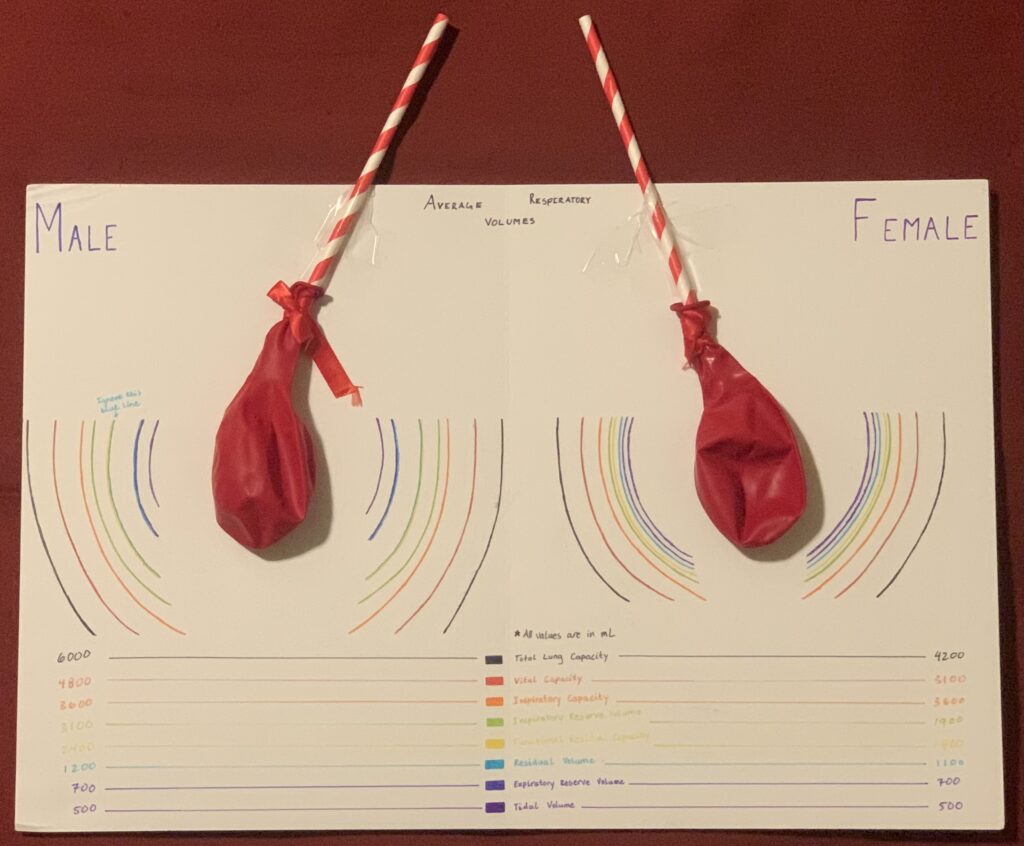
My project represents human lung capacities and volumes. I have constructed this representation by using two red balloons as the lungs, and the straws that are inserted in each balloon demonstrates human lung capacities and volumes when air is blown into the straw/balloon. The balloons blow up through this air flow and the increasing size of the “lung” will follow a color coded line system showing the different volumes and capacities. One “lung” represents the volumes of the male lung, while the other “lung” represents the female lung. This is done to showcase a visual comparison of both sex’s lung volumes and capacities. A caveat to this representation is that it will not be accurate in terms of illustrating the inhalation/expiration that correlates with the volumes and capacities; this project will mainly represent the amount of air present for the particular volumes and capacities.

William did his STEAM project on the different respiratory volumes between a male and female. William had a really cool way of showing the different human lung capacity and volumes. He used two balloons to represent the lungs of a female and male. He has straws inserted in both of the balloons so that way you can blow into them and the balloons will expand just like how real lungs would. He shows us all the different lung capacities and volumes between male lungs and female lungs in a color coded system. He gives us the numbers of the volumes and capacities and also gives us a visual of all of the different volumes and capacities. He does this by using a color coding system and draws the different colors around the balloon so that we can see how big the balloon would get at that capacity. I really like how he uses balloons and a color coding system to demonstrate his project. I also like that his balloons and numbers are side by side so that we can easily compare the two different lungs. Males have a higher lung capacity than females at 6000ml when females are at 4200ml. Males have a higher vital capacity, inspiratory capacity, inspiratory reserve volume, residual capacity, and residual volume than females do. The only volumes that females and males are at the same is the expiratory reserve volume and the tidal volume. Overall males lung capacity and volumes are higher than females lung capacity and volumes. I really like how organized and creative Williams’ project is and I think he did a really good job!